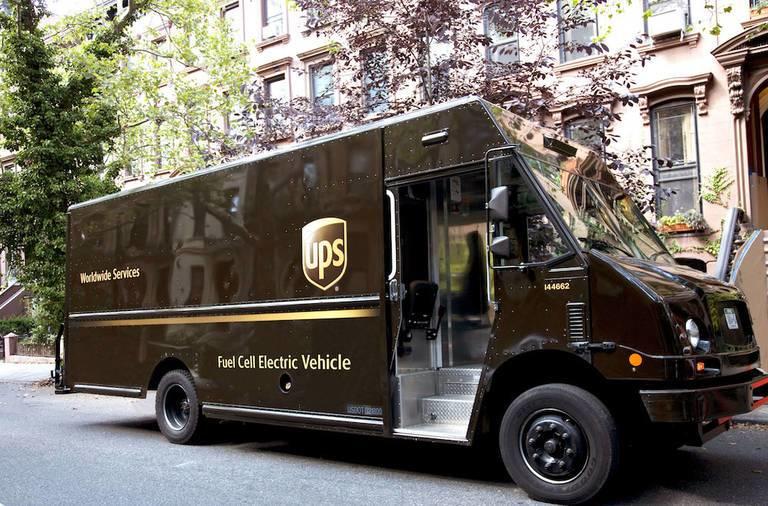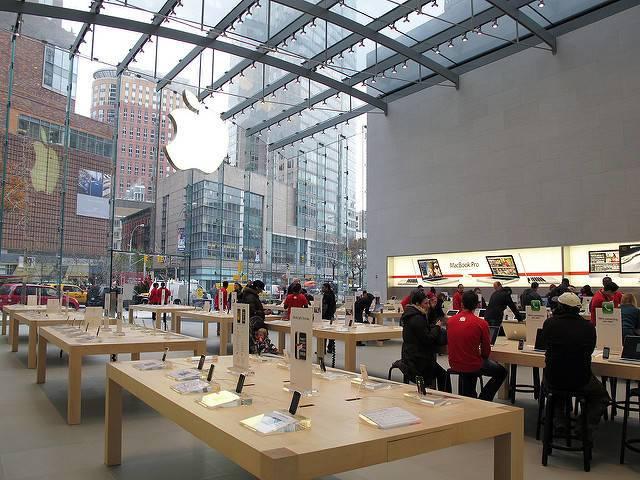South Carolina's Capital Inches Closer to 100 Percent Renewables


Steve Benjamin, the mayor of Columbia, South Carolina, recently became a co-chair for the Sierra Club’s Mayors for 100 Percent Clean Energy Campaign.
Benjamin's addition to the growing list of mayors who say they will transition their communities to 100 percent renewable energy is largely symbolic: To date, the city government has not released a target date or plan by which Columbia will ditch fossil fuels in favor of clean technologies. And the Democratic mayor's city is also the capital of a deeply red state.
South Carolina's legislature has passed some climate-friendly bills in recent years, but it did not always move quickly on the adoption of a clean-energy agenda. Incentives for investing in renewables in South Carolina are scarcer than in other U.S. states.
Nevertheless, Benjamin and his city of 132,000 are making an important point. At a time when the federal government appears poised to abandon its role as a global leader on climate action, the reality is that cities can take the lead in mitigating climate risks by scaling clean-energy technologies. And in doing so, Columbia joins a group of cities as diverse as Atlanta, San Diego and Grand Rapids, Michigan, that say they are keen on doing their part to stall climate change while modernizing their economies.
In a recent interview with the the smart cities blog CityLab, Benjamin outlined some of the steps that Columbia has already taken to incorporate more renewables in its local grid.
South Carolina’s solar power initiative has already been greeted with enthusiasm by Columbia residents. To date, the city’s businesses and residents have installed enough solar power capacity to generate 8.2 million kilowatt-hours of electricity, which Benjamin claims is the equivalent of nixing 13 million car miles.
Other incremental changes include a commitment to running Columbia’s city council meetings on 100 percent renewables, converting almost all of the city’s traffic lights to LEDs, and fueling 60 percent of all city buses with natural gas instead of diesel. Benjamin also credits local NGOs, including Sustainable Midlands, with raising awareness about renewables and their environmental and economic benefits.
Some of Columbia’s push for climate resilience stems from recent experience. The city, as well as much of South Carolina, has experienced its share of climate-related disasters and natural catastrophes, dating even before Hurricane Hugo in 1989. The extreme October 2015 rainfall that hit Columbia, which Benjamin described as a “1,000-year flood event,” killed 19 people and caused billions of dollars in damages. That flood alone, by some accounts, was the sixth such 1,000-year flood to hit the U.S. since 2010.
In the end, mayors like Benjamin are in the driver's seat to lead on the development of a low-carbon economy now that the federal government is unwilling and unable to carry that torch. “Cities are America’s only hope now in terms of climate action,” Johanna Partin of the Carbon Neutral Cities Alliance (CNCA) wrote in Time magazine shortly after the November election. “Climate policy cannot take a sabbatical and wait another four years or another election cycle for more aggressive action.”
To that end, CNCA has made the case of the funds cities could free up for infrastructure and public transportation systems if they did not have to spend so much of their budgets on fossil fuels.
Finally, as in much of the world, cities are generating the vast majority of U.S. GDP. McKinsey estimated that figure at 85 percent in 2010; Benjamin quoted 90 percent. Therefore, cities now, more than ever, can make the economic argument for investing in renewables, as today’s clean-energy sector is widely reported to be a larger employer than yesterday’s fossil fuels industry.
The days of cities chasing manufacturing jobs is over, as they are being displaced by offshoring or automation; but energy jobs cannot be outsourced, making this shift both an easy economic and environmental argument.
Image credit: Ron Cogswell/Flickr
De Beers Says Carbon-Neutral Mines Possible by 2022


De Beers is known for creating the American engagement ring tradition in the 1930s, linking the words “forever” and “diamond,” and what some call nefarious and monopolistic practices that for decades had a stranglehold on the global diamond trade.
But now the company, of which the extractive industries giant Anglo American has owned an 85 percent stake since 2011, wants to be known for transforming the mining sector in a different way.
Last week, De Beers announced a research project that it says could make some of its diamond mines carbon-neutral in as quickly as five years.
The trick for De Beers is to find a way to turn its diamond mines in Botswana, Canada, Namibia and South Africa into sequestration sites similar in concept to carbon capture and storage (CCS) facilities. The difference is this clean technology adaptation would not just sequester emissions into mine shafts or dig deep into the Earth’s crust at what were once open pit mining operations. Instead, the company plans to incorporate a process called “mineral carbonation.”
Key to De Beers’ hopes for mineral carbonation is kimberlite, a relatively rare igneous rock. Since the 19th century, the presence of kimberlite signaled to miners and prospectors that diamonds were readily available. The porous kimberlite is left behind once the diamonds encased in the rock are extracted. But those “tailings,” the mining industry term for materials that remain after precious metals or minerals are removed from ore, may just unlock the secret to make this sector far less carbon-intensive.
Ideas for mineral carbonation are hardly new. The United Nations Intergovernmental Panel on Climate Chance (IPCC) suggested that silica, a compound that is abundant in many materials from sand to quartz deposits, could react to carbon dioxide and create a storage solution. But that study, completed several years ago, also concluded that such a process was far too energy-intensive to scale. A similar study in the journal Nature Geoscience found a similar potential in geologic formations rich in basal or magnesium-rich mantle rocks; but researchers said these sites would fill up too fast, preventing such mineral carbonation from scaling and providing an effective sequestration option.
De Beers acknowledged that much of this research is new and untested. But the company insisted that accessing just a small amount of the kimberlite tailings at some of its operations could greatly reduce the carbon footprint at several of its mines. And in a press release, the company hinted that it is open to licensing this technology if it proves to be successful, as kimberlite is also found in abundance at sites where metals such as nickel and platinum are extracted.
The company is confident that its testing could be applied to larger of bodies of rock around the world, the project lead for this research, Dr. Evelyn Mervine, told Bloomberg last week. She said the project, which is scheduled to end next year, even has potential to allow some mines to sequester and offset more carbon emissions than they generate.
De Beers has no shortage of this waste kimberlite; the company is evaluating whether carbon gases within a fluid could be injected into the rock, or whether waste rock could simply be spread thinly in order for it to extract carbon from the atmosphere. So far two mines, in Canada and South Africa, have been the subject of De Beers’ mineral carbonation research.
Anglo American, De Beers' parent company, acknowledges that manmade climate change is a risk and says it has a plan to reduce its overall emissions while supporting the world’s effort to make climate action a priority. The company claims to have put such a plan in place in 2011 to both monitor its total carbon emissions more accurately and identify areas where it could reduce energy consumption as well as emissions.
But tackling those emissions has been a challenge for Anglo American thus far. In its most recent sustainability report, the company revealed that it emitted 18 million metric tons of greenhouse gases in 2015 – an increase of a million metric tons over the previous year. If De Beers’ research is successful and can scale, Anglo American could find a way to put actual numbers behind its pledges to mitigate its carbon footprint. So far, the most effective emissions-reduction strategy the company employed involves the divestment of some of its businesses.
Image credit: James St. John/Flickr
AHCA Is A Disaster For Your Health and Wallet


The American Health Care Act (AHCA) narrowly passed the Republican House of Representatives on Thursday. The bipartisan Congressional Budget Office has yet to analyze how this bill will impact human health and insurance costs.
But analyses by the Wall Street Journal, Kaiser Family Foundation and AARP indicate that the AHCA will reduce overall healthcare access while also raising health insurance premiums.
How the AHCA will hurt you and your loved ones
Four groups of people will pay the highest price from the passage of the AHCA, these three analyses found:
50- to 64-year-olds: The AHCA empowers insurance companies to charge people 50 to 64 years of age six times the premium charged to a millennia, according to AARP. The Kaiser Family Foundation projects that people in this age group could see their healthcare premiums soar from as low as $1,000 per year to over $40,000 a year.
Children: Twenty-one percent of our nation’s children live in poverty. That fact is shocking enough. The AHCA strips them of Medicaid funds. It also slashes funding for children needing special education assistance.
People with pre-existing conditions: The AHCA allows insurance companies to price discriminate against those with pre-existing conditions. People with cancer, for example, may see their care leap to unaffordable levels.
But you do not have to have cancer or a heart condition to quality for having a pre-existing condition. The pre-existing conditions that an insurance company can use to raise health insurance premiums include:
- Pregnancy or expectant parent (includes men)
- Sleep apnea
- Arthritis
- Diabetes
- Anxiety
- Acid reflux or heart burn
- Asthma
- High cholesterol
- Lyme disease (so a bug bite can rob you of affordable health care)
AARP calculates that annual health insurance premiums can soar to over $27,000 annually for people with one of 50 pre-existing conditions.
Working Americans: The AHCA allows states and companies to gut the services provided through an employer insurance plan. It frees companies from having to provide insurance for prescription drugs, hospitalization and maternity care.
Who wins under the AHCA
The AHCA does lower taxes by approximately $600 billion. But most of us will not see a dime of this tax cut. Here is how the AHCA lowers taxes:
- Eliminates a 3.8 percent tax on capital gains, dividends, and interest income for families earning $250,000 or more per year.
- Eliminates a 0.90 percent wage tax on income in excess of $250,000.
- Eliminates taxes on health insurance companies, pharmaceutical companies and medical device manufacturers.
These tax cuts, and other provisions in the AHCA, mean gains for these groups:
- People who do not want to buy health insurance. The Obamacare mandate of requiring everyone to either buy health insurance or pay a penalty would be eliminated under the AHCA. This reduces the insurance pool size, making insurance more expensive for the rest of us. It also means that when the uninsured do need health care, they will seek free or subsidized care at the local emergency center.
- Employers seeking to reduce health care costs. By stripping out covered benefits like maternity care, the AHCA empowers companies to cut healthcare costs by cutting health benefits.
Two steps that can prevent an AHCA health and financial disaster
The AHCA will not improve America’s health. It will not reduce healthcare costs. It is a political overstep in response to the Affordable Health Care Act (Obamacare) that promoted health but not affordability.
There is a path for achieving both universal, quality health care and affordability.
The first step is to reform the insurance system that empowers drug companies and healthcare providers with monopoly and oligopoly pricing powers. We do not buy car, home or life insurance through monopolies. Why are we buying health insurance through a system defined by rising prices, complex pricing, complex contract terms and claim denials handled by the insurance company?
Secondly, Americans must adopt a healthier lifestyle. Our lifestyles are driving healthcare costs to record levels. We are in a national weight crisis that has created an obesity and diabetes epidemic. Our lifestyles are a recipe for heart disease and cancer.
The two solutions to rising healthcare costs are both in our hands.
We must put politics aside and vote for candidates who support health insurance industry reform.
We must also take control of our own health.
Vote and act, or suffer the consequences of the American Health Care Act.
Image credit: Pixabay
What You Need to Know About New ESG Fund Ratings


By Janet Brown
What makes a fund sustainable?
Many people think that sustainable means environmentally friendly, but sustainable investing actually covers three broad categories: environmental, social and governance (ESG).
Environmental issues are typically the most widely understood, but social and governance policies are just as important. A socially responsible company seeks to treat its workers fairly and create products that help people and are safe to use. A well-governed company balances the needs of its executives and its shareholders. It’s overseen by an independent board of directors and operates in an ethical way without relying on corruption and bribery to get ahead.
ESG policies are often material to a business’ success. There are many examples of companies cutting costs by using renewable energy or conversely getting slapped with fines and lawsuits due to poor environmental results. Studies have repeatedly found that companies with good ESG policies also have performed well.
How to find good ESG funds
How do you find good environmental, social and governance funds?
For many years, the answer was to look for funds that had ‘sustainable’ or ‘socially responsible’ in their names. These funds usually consider a company’s ESG practices as part of their investment selection process. But this can limit your investment choices since only a small fraction of funds self-identify as ‘sustainable’ funds. According to Morningstar, these funds represent just 2 percent of the fund universe.
Today, you can substantially expand your choices by using new ESG -- environmental, social and governance – ratings for mutual funds. A 2016 MSCI study found thousands of funds have “significant exposure to sustainable impact themes," but just 14 percent of these funds are self-professed ESG or sustainable funds. For instance, MSCI found that more than 1,000 U.S. stock funds are “virtually ‘fossil fuel free,' even though very few of these funds – if any – were marketed as such."
Understanding fund ESG ratings
In 2016, MSCI and Morningstar introduced ESG ratings for mutual and exchange traded funds. Both firms rate about 20,000 funds and ETFs on the funds’ underlying holdings.
MSCI has calculated individual company ESG ratings for decades, and now they’re using this data to provide metrics on funds and ETFs. Morningstar is better known for their performance-ratings of funds, and their new sustainability scores are based on ESG data from Sustainalytics. (Morningstar’s globes ratings, as shown on Morningstar.com, indicate how a fund’s sustainability score compares to those of the other funds in its Morningstar category.)
There are limitations to these ratings, however. For instance, they don’t take a fund’s strategy into account. Many funds use their power as shareholders to engage with a firm’s management and file shareholder resolutions. This approach has had notable successes and has really helped companies move forward.
How to use fund ESG ratings
Fund ESG ratings are certainly a step in the right direction, but you’ll need to decide how to best put them to use in your portfolio. It helps to have a clear rules-based investment approach to help you make the following decisions:
- Will you invest based on ESG ratings alone or will you also consider fund performance?
Funds with terrific ESG ratings aren’t always the best performers (some Europe funds are a recent example), so if you only use ESG scores to select funds, you may not get the returns you need to reach your goals.
- Do you want to support or avoid a particular company or industry?
Fund ESG ratings are based on a fund’s portfolio and not on any one particular stock, so you also may find that some funds with high ESG ratings own companies that you’d don’t want to support, or they may not focus on the issues that are most important to you. Fidelity Growth & Income Portfolio (FGRIX), for instance, has a good ESG rating, but it owned Monsanto in its portfolio last month, a company that some investors seek to avoid.
- What will you do if a fund’s ESG rating changes?
Fund ESG ratings also will change over time, so you’ll need to check on your funds to make sure they’re still up to your standards.
Image credit: Pixabay
Janet Brown is the President and CEO of FundX Investment Group. She manages fund portfolios for high-net worth clients and foundations. She also manages a sustainable mutual fund. Janet is a board member of several non-profits and foundations and a longtime advocate for sustainable, responsible impact investing (SRI).
How Do We Ensure the SDGs Aren’t Just An Exercise?


Editor's Note: This post originally appeared on Unreasonable.is.
By Paul Polak
For the last 35 years, I’ve been working with thousands of farmers around the world to help design and produce low-cost, income-generating products that have already moved more than 20 million people out of poverty. Through our work at iDE and D-Rev, we’ve come up with a number of affordable solutions, such as the $25 treadle pump and small $3 farm drip-irrigation systems.
Because of my work over the years, many people have asked for my opinion on the United Nations’ development goals. A major part of both the Millennium Development Goals (MDGs) and the newer Sustainable Development Goals (SDGs) has always been related to eliminating poverty. When the MDGs concluded in 2015, the global community celebrated that we succeeded in cutting poverty in half. However, the actual impact of the MDG movement on extreme poverty was close to nonexistent.
Not a movement, but a market
The main success in cutting extreme poverty came from China, when they moved toward a more market-based economy. According to the World Bank, about 72 percent of poverty reduction in the developing world in the past 30 years happened in China alone. Millions of people left rural areas and moved to the capital and coastal industrial cities, where amazing cutting-edge growth has developed. As a result, the country experienced tremendous economic growth.
Long story short, a lot of people moved out of poverty in China as a result of this great market push, but they do not reflect what happened across the rest of the world. For example, even though the data shows that the percentage of the African population in extreme poverty fell, the number of impoverished people increased because of population growth.
Therefore, while it’s true that progress was made while the MDGs were in effect, I’m not convinced how much of it was directly influenced by the MDG movement. However, if you get everyone to agree that it’s important to end poverty, that’s a good thing.
In my opinion, this is the real question we should be asking: How do we as planet Earth devise ways to take people who are now in extreme poverty – anywhere from 800 million to over 2 billion people – and help them find ways to double their income? If the SDGs can do this as a movement, then I will be the first one to salute them.
A new breed of corporations
After messing around in this field for decades, what I’ve come away with is that the most practical, effective way to end poverty is to create new markets that are scalable and allow people who are poor to be the major players (buyers and sellers). It turns out that multinational corporations are the most skilled at creating new markets and have had the best results.
Take computers as an example. Before personal computers became popular, the only ones that were available filled half a room at a university. Now, we have a greater amount of power in the palm of our hand. The most transformative breakthroughs require a radical disruption in size and cost. We’re experiencing a movement toward miniaturization and affordability. That’s the revolution. But it’s far more than coming up with the technology. Once you have the technology, you have to set up supply chains, marketing programs, and more.
Thus, in order to end poverty, the most likely approach is creating a new breed of frontier multinational corporations. Listed below are the two key characteristics that I believe these companies need to embody:
- Each company has the potential, if successful, to double the income of 100 million people who live on $2 a day.
- Each company will generate $10 billion in annual revenue within 10 years.
Mobile phone providers have come closest to this new species of corporation. They have had a major impact on poverty, but it wasn’t their mission from the beginning. Many other companies have already started a similar restructuring. Take Toyota, for example. The Prius has never made a dime for the company, but it created a brand identity for Toyota that’s priceless, and now we have electric cars.
An inevitable shift
Honestly, it’s unrealistic to think we can wipe poverty out, because there will continue to be more people whose needs can’t be met. But I do believe a shift in structure and function of multinational corporations is possible, and in fact, it’s the only way they can survive.
I’m devoting the rest of my life to creating three companies with the above characteristics – one focused on clean drinking water and two focused on clean energy. If they are successful, though, then that’s the biggest impact on poverty that I can possibly imagine because I hope it will stimulate 100 or 1,000 more similar companies.
Rallying around the SDGs is not a bad idea if it’s all about shooting for the moon to end poverty and achieve the other goals, too. However, without a clear vision that’s scalable and implementable – and that creates new markets that enable poor people to double their income – then it’s all an exercise.
Image credit: Flickr/U.S. Mission to the United Nations
Dr. Polak is Founder and CEO of Windhorse International, a for-profit social venture leading a revolution in how companies design, price, market and distribute products to benefit the 2.6 billion customers who live on less than $2 a day. He is an author of "The Business Solution To Poverty" and "Designing Products and Services for Three Billion New Customers."
3p Weekend: Your Guide to Personal Fossil Fuel Divestment


With a busy week behind you and the weekend within reach, there’s no shame in taking things a bit easy on Friday afternoon. With this in mind, every Friday TriplePundit will give you a fun, easy read on a topic you care about. So, take a break from those endless email threads, and spend five minutes catching up on the latest trends in sustainability and business.
Global Divestment Mobilization week kicked off today and will run through May 13. And activists are calling on individuals and families to take a second look at their investments and how they support fossil fuels.
In advance of the occasion, Green Century Capital Management, in collaboration with Trillium Asset Management and 350.org, released a personal guide to divestment and reinvestment -- targeted at individuals, not big businesses or pension funds.
“Given the current political and regulatory environment, we are seeing more investors looking for ways get off the sidelines and use their investments to help make a positive impact,” said Leslie Samuelrich, president of Green Century Capital Management.
“We can’t stand by waiting for our governments to do the right thing. Divesting sends one clear message globally: It is time to end the age of fossil fuels because that’s what it really means to solve the climate crisis,” added Bill McKibben, founder of 350.org.
Want to shed fossils just in time for divestment week? Read on for the need-to-know.
Your bank and credit cards
Despite being nearly a decade removed from the Great Recession, big banks can't seem to stay out of the press for the wrong reasons.
Wells Fargo landed on hit lists for a fake accounts scandal and its reported backing of high-profile fossil fuel projects.
Likewise, divestment calls quickly swarmed around the 35 banks funding the embattled Dakota Access Pipeline. And last year a group of NGOs, including BankTrack and the Sierra Club, railed against big banks for pouring hundreds of billions into the most "extreme" fossil fuel projects, such as tar sands, offshore drilling and coal mining. Some of the world's most popular banks -- JPMorgan Chase, Bank of America, Citigroup, Deutsche Bank, Morgan Stanley and BNP Paribas -- were cited as the worst offenders.
While it's easy to overlook it, big banks are getting all of this investment money from one place -- their customers. Yes, the money banks 'borrow' from our checking and savings accounts are usually used to make loans, not investments. But the fees collected from accounts and credit cards line the coffers of these banks' investment funds.
Of course, not all of it is invested in fossils -- but a good chunk ends up there, even if banks are simply seeking a 'diversified' portfolio. According to the divestment report from 350.org and partners, 8 cents of every dollar spent in the S&P 500 goes toward the world's largest fossil fuel companies.
So, what can you do about it? You have a few options:
- Credit unions: Credit unions offer competitive interest rates and fees, and they spend their money locally -- not on national or international fossil fuel projects. For help finding a credit union that suits your needs, check out MyCreditUnion.gov.
- Community development banks: These are more common in big cities. But if you can find one, you should think about it. Much like credit unions, community development banks spend money locally, and they take it one step further by intentionally investing in projects that serve low-income people. A simple Google search will help you find one near you, or you can check out this list from the Community Development Bankers Association.
- Explore other options at Green America's BreakUpWithYourMegaBank.org.
Your investment accounts and 401(k)
If you're saving for retirement, remember that your money will be busy long before it pays for that sweet senior living spot in Boca Raton. Many mutual funds invest in energy, materials or utility companies on 350.org's list of the top 200 fossil fuel reserve owners.
350.org and partners suggested a few simple ways to clean up your personal investments. First, you can find out what's in your current mutual fund by checking out its latest annual report. If you decide you're not happy with the results, you have a few options at your disposal.
The 350.org report outlines ways to assess potential funds side-by-side, and how to track down a socially responsible investing advisor that suits your needs. It'll also help you start that awkward conversation with your human resources rep about moving your company's 401(k) into a cleaner fund.
If you're just looking for a few names, click here to see the mutual funds and investment managers compiled by 350.org and here to see suggestions from Green America.
Your electricity and transportation
Not everyone can slap solar on their roof or go buy an electric car. As prices for these technologies continue to fall, this is beginning to change. But in the meantime, if you can't afford a new car or a flashy solar array, there are still a few ways you can clean up your personal energy and transportation use.
Yes, the mainstays like turning off lights and appliances, taking public transportation, and carpooling still hold true. But you can go a bit further.
Some utilities give customers the option to buy renewable energy from a shared facility. Contact your local utility or check out their website for your options. If nothing else, utilities often partner with carbon offset providers to let you offset your home energy use by investing in carbon-reduction projects. Not sure if offsets are right for you? Check out this guide from the Natural Resources Defense Council.
Image credit: Pixabay
UPS Hydrogen Fuel Cell Truck Throws Cold Water On Tesla


Elon Musk cranked up the usual media buzz last month when he teased the idea of an electrified Tesla truck. But it looks like hydrogen fuel cell technology is giving his much-publicized EV brand a run for the money.
On Tuesday, UPS announced a first-of-its-kind demo project that will put a prototype electric truck through the delivery company's rigorous paces. And it's powered by a hydrogen fuel cell.
Hydrogen fuel cells vs. batteries
For those of you new to the topic, Tesla cars and other electric vehicles have a lot in common with hydrogen fuel cell vehicles. They both run on electric motors, and they are both zero-emission vehicles at the tailpipe.
The primary difference is that battery EVs like Tesla's need to charge up before hitting the road, while fuel cell EVs can be fueled up in a matter of minutes like gasmobiles.
Fuel cell EVs are just beginning to nudge their way into the passenger car market, but battery EVs have a running start in that sector. Fuel cell vehicles will have to come down in cost before they can compete effectively.
Another challenge is the nation's network of hydrogen fueling stations, which is thin to non-existent in most parts of the country.
It's a different picture in the commercial truck sector, where fuel cell vehicles could have an edge in terms of range and power.
Toyota already has a long-haul fuel cell truck in the works, and the U.S. startup truck company Nikola plans to put fuel cell trucks on the road in partnership with Ryder.
The UPS fuel cell truck
The new fuel cell truck is being developed in partnership with the U.S. Department of Energy and Unique Electric Solutions LLC, along with the Center for Transportation and the Environment and the Center for Electromechanics at the University of Texas.The prototype is expected to hit the streets of Sacramento, California, later this year in the form of a Class 6 medium-duty delivery truck.
UPS is calling this a first-of-its kind test because the fuel cell EV will be used in both short-haul and long-haul environments, and it will be expected to meet -- or beat -- the performance of conventional UPS trucks.
Here's the rundown from UPS:
"Each [fuel cell electric vehicle] produces electricity which continuously charges the batteries, thereby providing additional power and an extended range of 125 miles."The UPS trucks are equipped with a 32-kilowatt fuel cell coupled to 45 kilowatt-hours of battery storage and 10 kilograms of hydrogen fuel. The drive train runs on electricity supplied by batteries.
"Unlike other fuel cell applications, this will support the full duty cycle of the truck, including highway driving."
The first vehicle will be followed by several others until they rack up a minimum of 5,000 hours on delivery routes.
California was chosen for the test site because it is actively promoting fuel cell EV deployment, partly by developing a network of hydrogen fuel cell stations.
The UPS "Rolling Laboratory"
The new prototype is part of what UPS calls its "Rolling Laboratory" for testing advanced vehicles and alternative fuels in real-world conditions.
It is the continuation of a project that first received Energy Department funding in 2013, with the aim of providing verification for the use of hydrogen fuel cells in delivery vehicles.
In a 2016 fuel cell vehicle recap, the Energy Department noted that it awarded UPS $3 million to develop a fuel cell retrofit for its walk-in delivery vans in partnership with the company Hydrogenics.
That's significant in terms of UPS's sustainability profile because Hydrogenics is beginning to use solar and wind power to "split" hydrogen from water. A partnership like that has the potential to offer UPS a sustainable alternative to hydrogen sourced from natural gas.
UPS started the Rolling Laboratory in 2009 under the Barack Obama administration. So far, the company estimates that it has used the Rolling Laboratory strategy on more than 8,300 vehicles, with an estimated investment of more than $750 million in "alternative fuel and advanced technology vehicles and fueling stations."
Bike fans take note: The Rolling Laboratory approach also includes bicycles and e-bikes.
Meanwhile, UPS is not waiting around for the fuel cell fleet to log in 5,000 hours of service. The company is continuing invest in cleaner vehicles.
UPS ordered 125 hybrid electric trucks from Ohio-based electric vehicle company Workhorse last spring, and by last fall UPS was laying plans for 200 more. For its part, Workhorse is also charging ahead -- and plans to release a plug-in hybrid pick-up truck in advance of Tesla's commercial truck launch.
Images courtesy of UPS (press use only)
Oil Companies Are Downplaying Spills in the Gulf of Mexico, Coast Guard Data Reveals


Seven years after the Deepwater Horizon disaster killed 11 people, spilled almost 5 million barrels of petroleum into the Gulf of Mexico, and demolished the reputation of an energy company and its CEO, the evidence suggests that oil companies operating in the region continue to downplay their impact on local ecosystems and communities.
Three Louisiana environmental organizations – DisasterMap.net, 350 Louisiana and the Louisiana Bucket Brigade – say there were 479 offshore oil accidents in the Gulf of Mexico last year. That amounts to about nine accidents a week. And 94 accidents were publicly reported during a particularly troublesome three-week period last fall.
The three groups worked together to cull publicly-available data from the U.S. Coast Guard. Those images were then evaluated by West Virginia-based SkyTruth, which estimated the volume of oil lost based on each spill's sheen.
The results often revealed a huge discrepancy between what these companies reported and analysts’ assessment of the volume of oil lost to accidents and leakage.
Last June, for example, one suspected oil spill attributed to Taylor Energy was reported to release only 550 gallons of oil (“only,” of course, being a relative term). But according to SkyTruth, the size of the sheen -- approximately 5.5 miles by 21.5 miles -- suggested a spill of over 80,000 gallons of crude oil.
This research corroborates other reports from the past several years which accused multiple energy companies of doing little to stop their wells from continuing to leak oil in the Gulf, including an investigation published by Wired in December.
But curtailing these leaks is complicated, as enforcement of offshore drilling violations is often lax. Furthermore, Taylor Energy -- frequently mentioned in the Louisiana groups' report -- is bankrupt, and several press reports say it only has one full-time employee, which makes any action on leaking wells attributed to that company highly unlikely.
The groups concluded that most of the 2016 accidents occurred near the Bird’s Foot Delta and Grand Isle along the Mississippi River – the latter of which is noted for its shrimping industry, a sector that suffered during and after the Deepwater Horizon catastrophe.
Meanwhile, the state of Louisiana is in the midst of approving a multimillion-dollar coastal master plan that seeks to restore many of the habitats that are constantly affected by pollution and oil-drilling accidents. In these organizations’ view, if such investment goes forward as planned, local and federal authorities should take more action to ensure more accidents do not happen again.
The impact of the oil industry’s operations in the Gulf Mexico reach beyond the question of how much oil is being spilled and who will be responsible for cleaning it all up. For these Louisiana nonprofits, the close to 900,000 gallons of oil spilled into the Gulf last year tell another story: Climate change is already having an impact on the state’s coasts, oil spills only make things worse for ecosystems and industry, and far more action is needed to ensure that all industries and businesses dependent on the Gulf of Mexico can thrive.
So far, the outlook is not encouraging. DisasterMap.net estimates that Louisiana’s statewide temperature was 2.25 degrees warmer than normal last year; the organization also concluded that the state lost an estimated 13 square miles of land during 2016 as well.
Image credit: Deepwater Horizon Response/Flickr
Bloomberg Pledges $3 Million for Coal Country Transition to a Low-Carbon Economy


It is clear that coal is disappearing from America’s energy portfolio, despite the Donald Trump administration’s pledge to give the sector a shot in the arm. The environmental case against coal is clear; but coal’s decline is mostly due to the convergence of technology and economics, not regulation. Even West Virginia’s largest utility recently announced it is weaning itself away from coal.
But often lost in the debate over whether our future will be powered by coal, natural gas, renewables or an “all of the above policy” is the question of what will happen to the people who lose their jobs as the U.S. increasingly drifts away from coal.
Former New York City Mayor Michael Bloomberg believes he has the answer, as he described in an op/ed published this week in the Washington Post
His foundation, Bloomberg Philanthropies, says it has a plan to mitigate climate change, move away from coal and prepare for a clean-energy future. And it also intends to work with coal miners and other industry workers who will need to find new jobs as the triad of automation, natural gas and renewable energy makes coal further irrelevant.
During an interview Wednesday night with Trevor Noah on "The Daily Show," Bloomberg said the U.S. must stop using coal if it hopes to continue its progress in fighting climate change, but that we should not forget displaced workers. “Find ways to retrain and create jobs for the people that get hurt, but you don’t keeping doing something that’s bad for everybody to create some jobs for a number of people; you find other ways to get them the jobs.”
On that point, Bloomberg Philanthropies created a fund of $3 million to support this transition; he and his foundation are seeking donations on Crowdwise to boost that total. The former mayor said he will match donations and cover transaction fees out of his own pocket.
A film the foundation produced, “From the Ashes,” discusses the lives and challenges faced by those working within the coal industry. It's scheduled to appear on the National Geographic channel this summer.
Three organizations will benefit from this campaign.
First, the Coalfield Development Corp., based in southern West Virginia, is out to rebuild the Appalachian economy. Its social enterprise mission includes jobs and new career opportunities in fields such as green building, solar power systems installation, land reclamation of areas once mined, sustainable agriculture and craftsmanship. The organization hires unemployed citizens, including coal miners, who then follow a 33-6-3 weekly schedule: 33 hours of paid work in one of the aforementioned sectors, six hours of higher education or training, and three hours of professional mentorship.
“The result is real work experience, an associate’s degree, and renewed self-confidence,” a Bloomberg Philanthropies spokesperson explained in an email exchange with TriplePundit.
In order to create resilient communities in what were once coal-dependent regions across the U.S., the Just Transition Fund will launch projects that ensure local economic development and long-term energy resilience.
In supporting coalfield and power plant communities that have started to transition away from coal, the Fund seeks to diversify and strengthen local economies, build stronger economies that prioritize people while protecting workers, and promote clean energy policies and technologies that can scale.
Finally, the Western Organization of Resource Councils (WORC), which first started in 1979, says it balances land stewardship and smart economic growth. A network of grassroots organizations spread across Colorado, Montana, North Dakota and Wyoming, WORC has a long track record of protecting local water resources, preserving family farms and ranches, and working with communities to make sure they have a say in the decisions that impact their communities.
WORC’s recent advocacy work includes a fight to exempt groceries from Idaho’s sales tax and efforts to make sure small and family farmers are treated fairly by federal agriculture policy.
As he wrapped up Wednesday night’s appearance on "The Daily Show," Bloomberg made it clear that he and his foundation are determined to step up where he says coal companies have failed.
He acknowledged that the public wants to breathe clean air, but they are also aware of the fact that many who once worked in the coal industry have been left behind.
“The coal companies have left the coal miners in a terrible situation,” Bloomberg said. “Generally, what has happened is the coal miners have been left with bad health problems, and no pensions, and in a part of a country that -- sadly and tragically and disgracefully for all of us -- has stayed poor for many, many, too many years.”
Image credit: Jimmy Emerson/Flickr
Can Apple’s $1 Billion Pledge Help Revitalize American Manufacturing?


The newswires went abuzz this week after Apple CEO Tim Cook told CNBC’s Jim Cramer that his company plans to launch a $1 billion fund to accelerate advanced manufacturing jobs across the United States.
Cook’s timing was prescient, considering how quickly companies have promised to either keep manufacturing operations stateside or pad the number of American jobs already on the books. The decline in manufacturing jobs in part led to Donald Trump’s surprise victory over Hillary Clinton last November.
And the enthusiasm for a resurgence in manufacturing is obvious when considering how well these jobs pay. According to the latest numbers released by the U.S. Bureau of Labor Statistics (BLS), manufacturing jobs, when available, can lead to a decent middle-income lifestyle with the average wage well over $26 an hour. Mining and logging pay even higher with hourly wages surpassing $32. Contrast those figures with retail jobs, which pay an average of $18 an hour; jobs in the leisure and hospitality services lag far behind, paying an average hourly wage of $15.33.
Cook was cagey on details. He said the company’s decision was in no way was influenced by the president. Furthermore, this is also not a promise to hire more American employees, but instead a commitment to help boost the American manufacturing sector’s potential in the coming years.
Cook also said Apple is ready to invest in another company in order to pursue this agenda, though he declined to name any specific firm. More details will reportedly be announced later this month.
Technology companies are often criticized by critics of free trade and offshoring, especially since many of these firms moved their manufacturing operations overseas years ago. Apple itself outsourced the vast majority of its manufacturing to its overseas supply chain; and its relationship with the electronic devices manufacturer Foxconn subjected the world’s most valuable technology company to rampant criticism several years ago.
Cook’s announcement indicates a slow turnaround from two decades of standard business practices in the technology sector. But there is a huge caveat: He made it clear during Wednesday’s talk with Cramer that this new fund will focus on advanced manufacturing jobs.
As publications including the New York Times have pointed out, this niche of manufacturing does not exactly cover mass-produced widgets or durable goods such as air-conditioning units or kitchen appliances. In general, this sector manufactures high-value products, including electronics, medical devices, energy technologies and cars. And these sectors are not reliant on scores of workers at an assembly line – they increasingly turn to workers who have some background in coding, as well as next-generation advances in 3-D printing and automation.
As Don Lee of the Los Angeles Times wrote during the heat of the presidential campaign last summer, we are witnessing a trend of companies that are either returning to the U.S. to open factories or supplementing their stateside operations.
True, manufacturing in China is not the cheaper and more viable alternative it was earlier this century. Chinese workers are demanding higher pay, and turnover at many factories is high. But more companies designing a range of products from electric toothbrush heads to bicycles have concluded that it makes more sense to have the “Made in the U.S.A.” label, especially when advances in technology and automation allow factory managers to hire fewer employees – and not necessarily pay those heady wages on par with BLS averages.
The truth is, U.S. manufacturing output is increasing, and has been for several years. But automation, which has a broad reach from coal mining to automobile assembly lines, will continue to displace workers. And no one in either government or business has come up with a solution that can address the needs of not only older people who cannot find work, but also younger citizens who still have a long working life ahead but limited job options.
Image credit: Scott Beale/Flickr